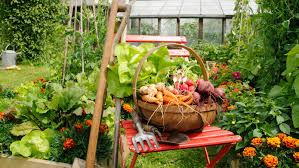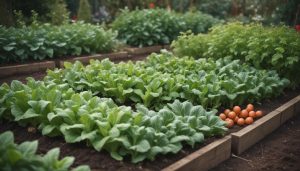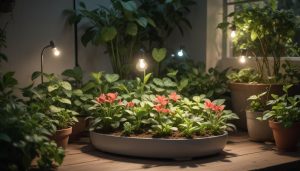How to Make Gardening Simple and Rewarding
Jessica White August 21, 2025
Gardening has become increasingly popular in 2025 as more people look for ways to connect with nature, grow fresh produce, and create relaxing outdoor spaces. If you’re wondering how to make gardening simple and rewarding, this guide will provide practical tips, emerging trends, and easy strategies for gardeners of all experience levels. By focusing on low-maintenance methods, sustainable practices, and smart gardening tools, anyone can cultivate a thriving garden without stress.

1. Sustainable Gardening Practices for Simplicity and Growth
One of the most significant trends in modern gardening is sustainability. Sustainable gardening practices are not only better for the environment but also make garden maintenance easier. By reducing reliance on chemical fertilizers and pesticides, you can create a healthier and more productive garden.
Key Strategies for Sustainable Gardening:
- Composting: Transform kitchen scraps into nutrient-rich soil, which improves plant health and reduces waste.
- Rainwater Harvesting: Collect rainwater to water your garden, conserving resources and reducing water bills.
- Planting Native Species: Plants adapted to your local climate are less prone to disease, require less water, and need minimal maintenance.
- Natural Fertilizers: Use organic fertilizers such as manure, compost tea, or seaweed to promote growth without chemicals.
Sustainable gardens contribute to biodiversity and reduce environmental impact, making gardening both simpler and more rewarding for hobbyists and professionals alike (Royal Horticultural Society, 2024).
2. Using Smart Gardening Tools for Less Effort
Technology has transformed gardening in recent years, and smart tools can simplify tasks for gardeners who want efficiency without tech complexity. Smart irrigation systems, soil sensors, and app-controlled grow lights make maintaining a garden easier and more precise.
Essential Smart Gardening Tools:
- Automated Watering Systems: These systems regulate water delivery to plants, reducing the risk of overwatering or underwatering.
- Soil Moisture Sensors: Sensors track soil conditions and alert gardeners when adjustments are needed.
- App-Connected Grow Lights: Indoor gardeners can control lighting schedules to maximize plant growth.
Even though these tools involve modern technology, they are designed to be user-friendly. They help gardeners save time while ensuring plants receive optimal care, making gardening more enjoyable and less physically demanding (Gardening Know How, 2024).
3. Indoor Gardening and Vertical Gardens
As urban spaces shrink, indoor gardening and vertical gardens are emerging as practical and visually appealing solutions. Indoor gardening allows year-round cultivation of vegetables, herbs, and ornamental plants, while vertical gardens maximize space efficiency in small areas.
Tips for Indoor and Vertical Gardening:
- Container Gardening: Use pots and trays to grow plants in limited indoor spaces.
- Hydroponic Systems: Grow plants in nutrient-rich water for faster growth and less soil mess.
- Vertical Wall Gardens: Install planters on walls to save floor space and create green focal points.
- LED Grow Lights: Provide adequate lighting for indoor plants, especially in low-light rooms.
Vertical and indoor gardens are particularly rewarding because they allow urban dwellers to enjoy gardening without a traditional yard. They also improve indoor air quality and create a calming, green environment (The Spruce, 2023).
4. Low-Maintenance Gardening Techniques
For many people, the challenge of gardening is maintaining plants consistently. Low-maintenance gardening makes it simple to achieve beautiful results without constant effort.
Effective Low-Maintenance Techniques:
- Perennial Plants: These plants return each year, eliminating the need for annual replanting.
- Mulching: Applying mulch retains soil moisture, prevents weeds, and improves soil fertility.
- Drought-Resistant Plants: Reduce watering needs with hardy species like lavender, succulents, and ornamental grasses.
- Simple Landscaping: Group plants with similar water and sunlight requirements to streamline care.
Low-maintenance strategies allow gardeners to enjoy their outdoor spaces without feeling overwhelmed. They also increase the likelihood of long-term success because plants are resilient and less dependent on constant attention (American Horticultural Society, 2024).
5. Edible Gardening for Sustainability and Reward
Growing edible plants is one of the most rewarding ways to simplify gardening. Homegrown vegetables, fruits, and herbs provide fresh, flavorful produce while reducing grocery expenses. Additionally, edible gardening encourages healthy eating and creates a stronger connection to nature.
Ideas for Edible Gardening:
- Herb Gardens: Easy-to-grow herbs like basil, parsley, and mint can thrive indoors or on patios.
- Vegetable Beds: Tomatoes, peppers, and leafy greens are ideal for raised beds or container gardens.
- Fruit Trees in Containers: Dwarf fruit trees, including lemon and apple, are suitable for small spaces.
- Community Gardening: Collaborate with neighbors to grow food in shared spaces, sharing tips and produce.
Edible gardening is not only practical but also enhances satisfaction because gardeners can consume the results of their work. Even small spaces can yield meaningful harvests with proper planning.
6. Seasonal Planning for Year-Round Gardening
Planning gardens seasonally ensures plants thrive throughout the year and reduces the likelihood of failure. Seasonal gardening also simplifies care because you focus on species suited for current conditions.
Seasonal Gardening Tips:
- Spring: Plant early crops like carrots, peas, and lettuces.
- Summer: Focus on flowering plants and heat-tolerant vegetables.
- Fall: Grow autumn crops such as kale, broccoli, and spinach.
- Winter: Maintain indoor plants and plan winter-flowering species.
By aligning planting schedules with seasonal cycles, gardeners can maintain a lush and productive garden throughout the year, maximizing rewards while minimizing effort (Gardening Know How, 2024).
7. Combining Trends for a Simple and Rewarding Garden
The most successful gardeners in 2025 combine multiple trends. Sustainable practices, smart tools, indoor and vertical gardening, low-maintenance designs, and edible plants work together to create gardens that are both simple and highly rewarding. By adopting these approaches, gardeners save time, reduce stress, and enjoy a vibrant, productive outdoor or indoor space.
Conclusion
Learning how to make gardening simple and rewarding involves embracing sustainable methods, leveraging easy-to-use tools, and focusing on low-maintenance and edible plants. By incorporating indoor gardens, vertical systems, and seasonal planning, even busy urban dwellers can enjoy thriving gardens without feeling overwhelmed. These trends make gardening more accessible than ever, allowing people to reap the physical, mental, and culinary benefits of their efforts.
Whether you are a beginner or an experienced gardener, following these principles ensures a beautiful, productive, and satisfying garden throughout the year.
References:
- Royal Horticultural Society (RHS). (2024) Sustainable Gardening Practices. Available at: https://www.rhs.org (Accessed: 21 August 2025).
- Gardening Know How. (2024) Smart Gardening Tools to Improve Yield. Available at: https://www.gardeningknowhow.com (Accessed: 21 August 2025).
- The Spruce. (2023) Indoor Gardening and Vertical Gardens Guide. Available at: https://www.thespruce.com (Accessed: 21 August 2025).






